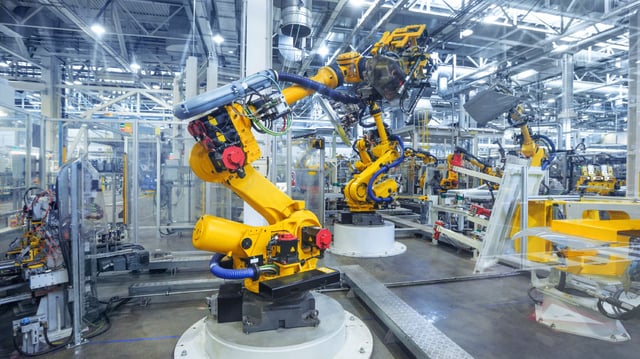Breaking old habits can prove to be difficult for any organization. Although disruptions have transformed the way we live and conduct business as consumers, our enterprises are slow to adopt new technologies like edge computing and IoT. Managers must validate, teams must align, budgets must be approved, and ROI must be clear.
Here’s some good news. Digital transformation —though it sounds intimidating for those who have not yet embraced it- is achievable in less time and with less of an overhaul than consultants may recommend.
One way is with condition-based maintenance, which offers enterprises an opportunity to realize immediate results related to asset longevity, reduced maintenance costs and improved information systems. This solution is easily achieved using the Losant Enterprise IoT Platform with its built-in Edge Compute functionality.
Condition-Based Maintenance
For decades we changed our car’s engine oil on a schedule-- every three months or every 3,000 miles. Today, we rely on a range of engine sensors to alert us when its oil should be changed, along with many other system maintenance requirements depending on how evolved a vehicle is. Access to real-time and actionable notifications save us time and resources.
This same access to information is available to enhance industrial environments. In fact, an average company can save 50% of maintenance costs by moving from time-based or preventative maintenance to condition-based maintenance according to ARC Advisory Group’s Enterprise Asset Management and Field Service Management Market Study. [source]
How? Well, the purpose of preventative maintenance is to prevent time-based machinery failure. Owners and operators use scheduled maintenance to extend the longevity of plant assets. Similar to the oil change example, this practice worked well before we could tap into more of the engine’s information. An industry study has determined, however, that 82% of asset failures occur randomly as opposed to a result of age. [source] We’ve also learned that IoT technology, which uses sensors, connectivity and a platform to visualize data, can help ops managers understand the status, and internal conditions of virtually any machine with a Programmable Logic Controller or PLC. IoT can enable the switch from preventative maintenance to condition-based maintenance. And, with a retrofitted IoT solution using edge computing, condition information can be garnered from existing assets and legacy equipment.
Merging the old and the new
The adoption of IoT doesn’t always require an organization to rip and replace. Oftentimes, even a plant’s oldest equipment uses a PLC to monitor functions and change processes. Losant’s IoT platform integrated with edge computing allows clients to read Modbus data from PLCs which will allow owners to monitor conditions without needing to replace existing equipment. Users can set an alert for anomalous conditions or create a workflow which will send a daily email report of conditions to leadership teams or clients.
Using a gateway and edge computing, a Losant client capitalized on this opportunity by retrofitting an engine which powered an existing pump in a remote location. The engine’s PLC now communicates with a gateway and the information is visible on a Losant dashboard. Now, instead of requiring a technician to fly to a remote location for monthly preventative maintenance, the company is saving maintenance costs by getting daily reports and making decisions using real-time information about the conditions of its high-value equipment.
Another useful benefit is the ability to integrate information garnered from IoT with an existing ERP system, inventory information, equipment maintenance information and more. When these connections have been unified in an evolved IoT platform like Losant’s, the response to an anomalous condition becomes much more sophisticated. In addition to an alert, a workflow could prompt maintenance information related to a specific failure —eliminating the need to flip through a manual-- or, if an ERP is connected, a part could be ordered automatically.
Reaping the Benefits of Edge Computing
Transitioning from preventative maintenance to condition-based maintenance using IoT and edge computing opens the door for information which can be used for other purposes as well. Enterprises willing to implement edge computing have the potential to reduce or eliminate system downtime altogether, by getting real-time information about equipment conditions. There are a host of other potential benefits related to edge computing in the industrial environment including: reducing latency and reliance on constant connectivity; digitizing historical equipment information for future innovations like predictive maintenance and machine learning; and creating new revenue streams from available maintenance information.
Depending on the industry, there are several incentives for breaking old habits, digitally transforming and adopting an IoT solution enhanced with edge computing. Get started with a POC Solution Session today to learn more about how IoT can benefit your business.



